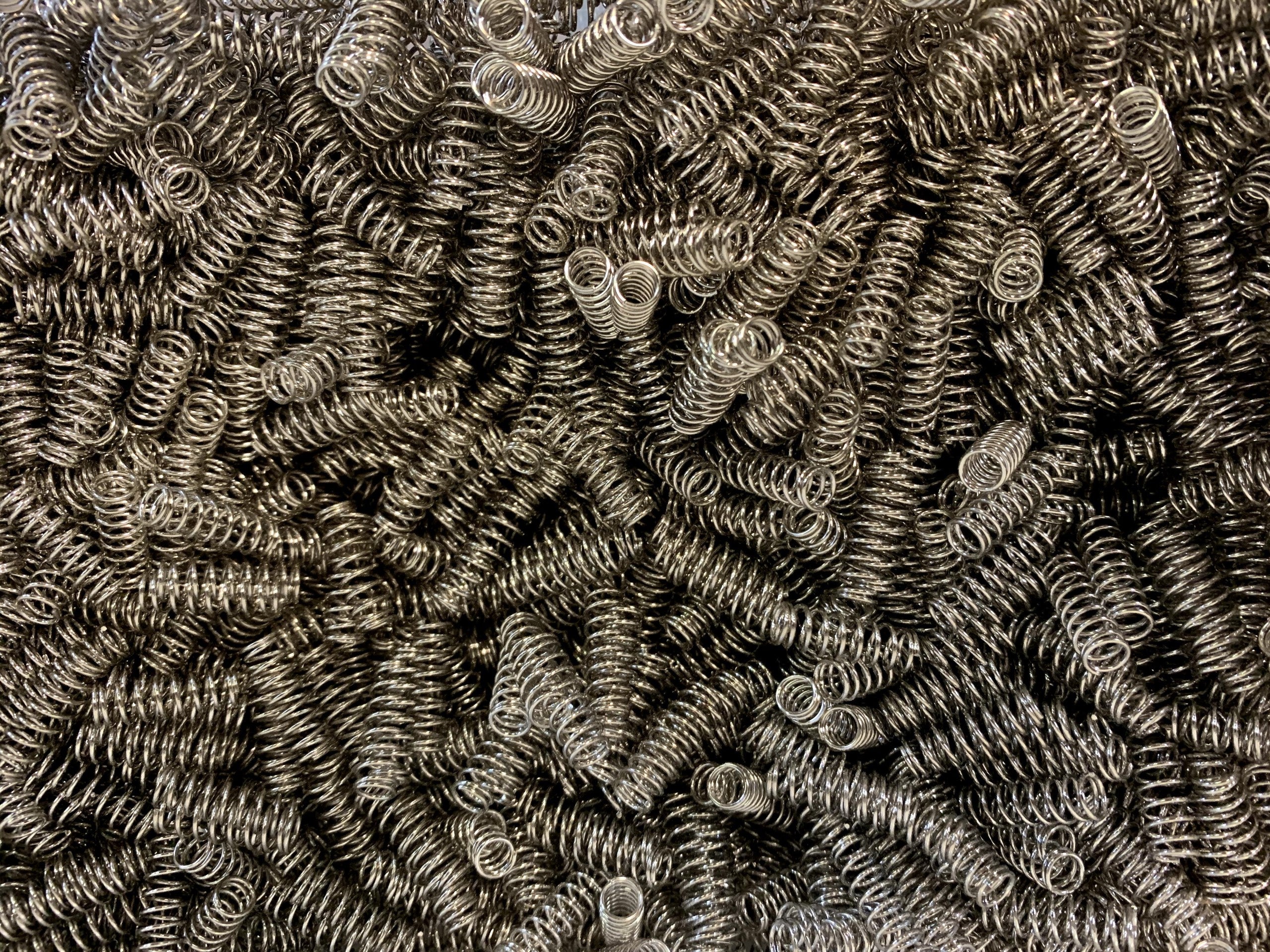One of the lesser known components of the dialtune system is a series of stainless steel springs that sit hidden inside the hoop clips on the support rim.
These small but critical parts are essential to the functioning of the quick release hoop, by allowing the support rim to rise back to its full height as the tension is released from the system. Without them, the counter hoop would rest on the outer flange of the drumhead, but would never rise above it, making it difficult to disengage the counter hoop for head changes.
This interview provides a little insight into the process of designing these invisible details of the dialtune system……..
Alexander: "When you and I were doing final QC, you touched on how much detail and thoughts went into the springs. Could you elaborate on that?"
Bryan: "Absolutely. Our journey to identify the perfect spring was a lot more complicated than I would have expected. At first, it seemed like we should be able to find an existing off the shelf solution. After all, springs are used in all sorts of products! It turned out to be much more complicated than that.
Alexander: "What was involved in making the springs work for Dialtune?"
Bryan: "Springs turned out to be a whole universe of knowledge. Initially, I knew very little about them, but soon learned more than I ever intended. Material choice was critical—stainless steel, to prevent rust. Then we delved into the nuances of compression ratios, wire diameters, coil heights, and more. Over time, springs can lose some compression, but we needed to ensure this wouldn't impact the drum's long-term reliability."
Alexander: "How did you come to decide on the final spring for Dialtune?"
Bryan: "We put our springs through rigorous testing to reach a point of absolute confidence in their performance and durability. Customization was key, adapting them to fit within our unique housing, ensuring they were just the right height to properly raise the hoop. Initially, the drum might feel a bit stiff, a sign of the springs settling in. But they're designed to maintain their function over time, becoming smoother and easier to use."
Bryan: "The testing phase brought its own set of challenges. Our first prototype springs weren't made of stainless steel and quickly rusted out, a critical oversight we caught early on. Thankfully, we had an exceptional engineer who played a crucial role in navigating us through this. It saved me from having to become a spring expert. We encountered issues with springs that were too short or too tall, each trial bringing us closer to our goal."
Bryan: "One thing that struck me through this process is the complexity of simplicity. What I mean is, to achieve something that operates smoothly and seems simple in function can actually be incredibly difficult to achieve. A cable and pulley system might seem straightforward, but achieving seamless operation required meticulous engineering and precision. It's a journey of trial and error, where every detail matters in order to create something that works smoothly and simply."


Leave a comment